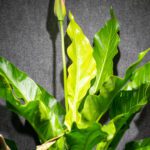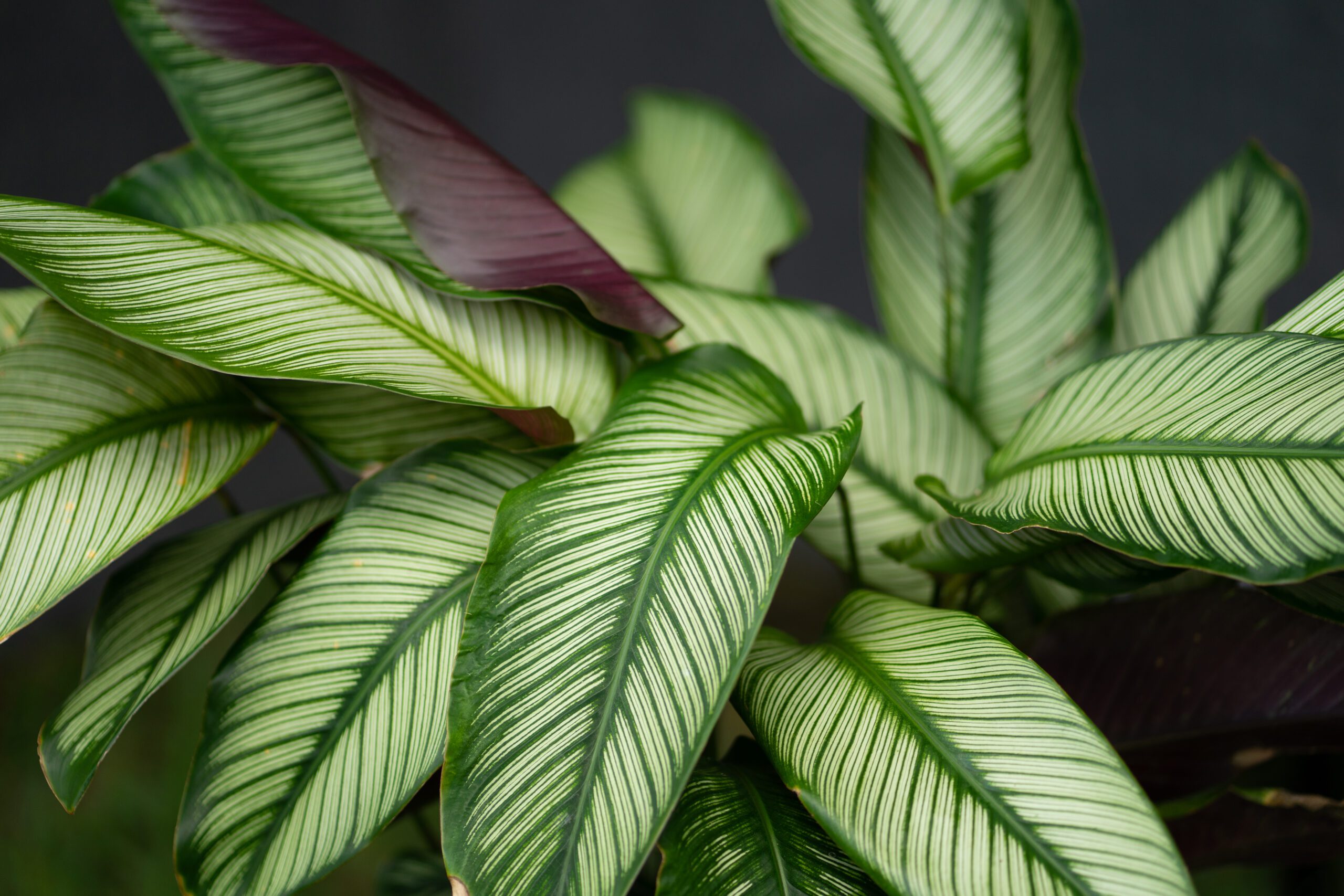Anthurium Hookerii 9″ pot
$49.99
Anthurium hookeri plants are one of a kind. They’re not the type of tropical plant you’ll find in any plant lover’s home. Because they’re not as widely known as the others.
This epiphytic specimen has the amazing ability to grow without soil. In the tropical forests where these plants originate, they grow on top of other plants and rocks
But that’s not the only cool thing about the Anthurium hookeri. This Anthurium plant grows white berries.
Select any combination of 2 or more plants for a 15% to 20% discount (some exceptions may apply)
Discount per quantity
| Quantity | Price | % Discount |
|---|---|---|
| 2 | $44.99 | 10% |
| 3 | $39.99 | 20% |
| 4+ | $37.49 | 25% |
- Description
- Additional information
- Reviews (0)
Description
Anthuriums have always been a favorite amongst all the tropical plants out there, and there’s just no question why! Not only are they so oh-so-captivating and vibrant, they just make such a great addition to any living space.
The genus Anthurium is a large and diverse group of plants spreading across the Americas from Mexico to South America and the Caribbean Basin. Although most people associate Anthuriums with showy red and orange spathes (bracts) of Anthurium Andreanum. The majority of Anthurium species have plain green undistinctive bracts and if they known horticulturally they are grown for their unique growth habit, ie. Bird’s nest type, or their distinctive foliage, ie. Anthurium Clarinervium, or both distinctive foliage and growth habit, ir. Anthurium Superbum.
Anthuriums as a general rule prefer medium to bright light, They can tolerate all levels of indirect light, but anthuriums growing in low light will have fewer flowers and will grow slower. These plants cannot tolerate direct light however, as this can burn the leaves.
Anthurium Care
The soil should be kept slightly moist and never allowed to dry out completely. Set the pot in a tray with rocks or gravel that has water. The plant’s water can drain there and help keep humidity levels higher around the plant. Allow the top of the soil to dry out to the touch before watering again. Indoors, this is about once a week. If outside, during hot days, it can be every two or three days between waterings.
Your Anthurium prefers bright indirect light. Direct sun may burn the leaves. The more light the plant receives, the more blooms your plant will produce.
It is safe and recommended to use liquid fertilizer throughout the growing period. Use a fertilizer high in phosphorus, dilute it to 1/4 strength and feed the plants every week. The phosphorus-rich fertilizer will help encourage blooms. The common gardening expression, “Weekly, weakly” applies to how often to fertilize and the strength or concentration of fertilizer to water.
All species of anthurium are native tropical plants, and mimicking those conditions will give you the best chances for success. This plant prefers high humidity and temperatures between 65 and 85 degrees Fahrenheit. These plants can be grown outside in zones 11 to 12 and will likely perish at temperatures 40 degrees or less. in dry climates—or during dry winter months—mist the plant daily to keep humidity levels high. You may find it necessary to run a humidifier constantly during dry months.
Potted anthuriums prefer a rich but well-draining potting mix that should be kept moist but not wet. Potting mix tailored for orchids, with a few handfuls of sand and a few handfuls of peat moss mixed in, is ideal
If you want to keep your anthurium healthy, you have to keep them in the right place. Anthuriums come from South American rainforests and can be harmed if they are not kept in conditions that resemble their ancestral home.
Types of Anthurium
- A. andreanum: Common species; heart-shaped leaves that grow up to 1 foot with red, white, pink, and variegated flowers; distinguished by a straight flower spike
- A. scherzerianum: Common species; most forgiving of anthuriums, features a curling orange flower spike and arrow-shaped leaves
- A. crystallinum: Less common species; deep green, velvety leaves with pronounced white ribs; leaves grow up to 2 feet across
- A. faustinomirandae: Less common species; monster-sized plant with cardboard-stiff leaves, grows up to 5 feet long; almost exclusively a greenhouse plant
Pruning
When a plant has dying or wilting leaves, it puts its energy into trying to revive those dying leaves. You can help your plant focus its energy on creating new leaves and flowers by removing the browning leaves. If they’re not easy to pluck, use hand pruners to trim them. Remove faded flowers by snipping them off at the base. Only leave faded flowers on longer if you want the plant to produce seeds.
Take some time to shape your plant; snip off errant leaves or shoots that make the plant look off-balance. Do not remove too many leaves; leave at least three or four.
Propagating Anthurium
Anthuriums have a way of telling you that they’re ready to propagate; they send out “air roots.” Anthurium roots are fleshy, appearing almost knobby or tuberous. They’ll start jutting out from a stem above the soil line in the pot. This can happen during any season. Propagating is a good idea for plants that have stopped blooming or decreased bloom frequency. You can propagate from air root cuttings or stem cuttings—here’s how:
- You’ll need a clean pot, fresh well-draining soil, and a sharp, sterilized knife or pruners. Optionally, you may want to use rooting hormone, to increase your rooting success.
- Using your sharp implement, cut off the air roots or select a stem at least 6 inches long with two to three sets of leaves. Dip the cut end of the stem in rooting hormone, if you want.
- Plant the cut end of the step or the air root in fresh potting mix. Water the soil thoroughly, keeping the soil moist. Place the pot in a warm spot but with indirect light. It should take about 4 to 6 weeks before you notice new growth.
How to Grow Anthurium From Seed
You can also grow anthurium from seed; however, it can take up to four years before you see flowers, which might discourage those looking for a colorful plant. The best planting medium is for this seed is moist vermiculite. Lightly press the seed into the vermiculite an inch apart. To speed up germination, cover the plant with a clear plastic bag. Place the plant near a window, but no direct light. If the water beads up within the plastic, open one side and allow some air; the plant needs to breathe. Remove the plastic cover entirely after you notice new growth.
Potting and Repotting Anthurium
When an anthurium fills its pot with roots and begins to send plentiful air roots, it is time to repot. Usually, this is necessary every two years or so. Transfer the plant to a pot that is only slightly larger than the old one—no more than 2 inches larger.
Get a container based on your watering habits. Overwaterers should get a terra cotta pot that can allow the water to seep out of the container. If you tend to forget about your plants, use plastic or ceramic to hold in moisture. No matter your habits, you need a container with multiple drainage holes.
To repot an anthurium, fill the new pot with about 1/3 potting mix, then set the plant onto the soil and lightly pack additional soil around the base, up to the level the plant was buried in its old pot. As new air roots form above the soil over the following weeks, lightly pack additional potting mix around the exposed roots.
Overwintering
Anthurium will not survive outside in non-tropical zones during the winter. If your plant lives outside for the winter, bring it in as soon as the temperature drops below 60 F. The plant will need a sunny window, temperatures that hover around 75 F, and high humidity. A bathroom environment is perfect for this plant.
Common Pests
These plants are subject to the same pests that commonly affect most houseplants: mealybugs, spider mites, whitefly, and scale. Aphids leave distorted mottled leaves over time. If you also get a trail of ants on your plants, it’s a good sign you have an aphid infestation. Ants feed on an aphid’s sticky residue.
Leaves that have yellow stippling can be spider mites. Thrips also cause mottled leaves and feed on new growth, as do mealybugs. If the insects remain on the plant, they will become faded, limp, fail to produce new growth, and die. You can often control insects naturally with short, sharp blasts of water, which dislodge and often drown the pests. Stubborn insects may respond to horticultural soap or oil sprays, which are natural and don’t harm the plant. You can use horticultural oils and soaps to treat these pests.
How to Get Anthurium to Bloom
Anthuriums are picky. But, their uniquely beautiful flowers make them worth the extra effort. Each flower can last for about six weeks, and they may return, flowering every few months. You might not see blooms If your plant has soggy soil, insufficient lighting, or your plant is too rootbound. You will need high humidity and weekly feeding with a high-phosphorus fertilizer to get this plant to bloom. You can try to tweak other conditions, including using a different potting mix (orchid mix is good) and removing plants from nearby drafty windows or HVAC vents.
Common Problems With Anthurium
This plant has some special needs, but once you figure out its sweet spot and you nail down a routine, anthurium is an easy plant to keep.
Yellowing Leaves
Too much direct sunlight may cause Anthurium leaves to turn yellow. Bleached and brown tips also indicate that it is receiving too much light. Move the plant a little further away from the window. Also, yellowing leaves can be bacterial wilt. It can change the color of stems and leaves from yellow to bronze.
Deep Green Leaves
An anthurium may also be getting too little sunlight. Dark green foliage is a clear sign. Relocate the plant to a sunnier location.
Floppy Leaves
Rhizoctonia is a fungus that can take hold in roots and lower stems. It makes young, delicate stems weak and floppy because they’re waterlogged.
We want our customers to feel like they are in a nursery buying the plants. To accomplish that goal, we try to display in our online store every single plant we sell. That means every plant you see in our store with a mark, drawing or a number on the pot will be the plant delivered to your door. There are times in which plant sales are faster than we can photograph and list them individually. Therefore, unmarked plants are a representative of other plants belonging to the same lot. The product you purchase will not be the exact one displayed in the image but it will be similar. We take special care ensuring that unmarked plants are an accurate representation of the plant you will receive. We take great pride in how we ship our plants and we are sure you will be greatly satisfied with how we do it Each plant has a custom, handmade wood support structure that ensures that it will get there safely and undamaged. We also ship our plants in larger boxes to prevent leaves from being bent and damaged. Please Add 72 hours heat pack to the order if you feel the weather could hurt the plant in transit to your area
Discover more from 305 Greenery, Inc.
Subscribe to get the latest posts to your email.
Additional information
| Weight | 6 lbs |
|---|---|
| Dimensions | 20 × 6 × 6 in |
Only logged in customers who have purchased this product may leave a review.


































Reviews
There are no reviews yet.